Finite Element Model Construction and Cutting Parameter Calibration of Wild Chrysanthemum Stem
Abstract
:1. Introduction
2. Materials and Methods
2.1. Materials
2.2. Wild Chrysanthemum Stem Diameter Distribution
2.3. Shear Tests
2.4. Finite Element Model
2.4.1. Selection of Stem Material Model in the LS-DYNA Software
2.4.2. Modeling in Ansys Workbench and LS-DYNA Software
2.5. Parameter Calibration Experimental Design
2.5.1. Plackett–Burman Experimental Design
2.5.2. Central Composite Experimental Design
3. Results and Discussion
3.1. Plackett–Burman Test
3.2. Central Composite Design Experiment
3.3. Validation Tests
4. Conclusions
Author Contributions
Funding
Institutional Review Board Statement
Informed Consent Statement
Data Availability Statement
Conflicts of Interest
References
- Li, G.; Chen, Y.; Wang, P.; Guan, R.; Ye, Y.; Zhao, J.; You, A.; Bi, Y. Protection of terpenes and flavonoids from Chrysanthemi Indici Flos on immunological liver injury. Chin. Tradit. Herb. Drugs 2013, 44, 3510–3514. [Google Scholar]
- Jiang, Z.; Li, X.; Luo, B. Anti-inflammatory and Analgesic Effects of Essential Oil from Chrysanthemi Indici Flos. Chin. J. Exp. Tradit. Med. Formulae 2015, 21, 124–127. [Google Scholar]
- Peng, W. The application of virtual reality technology in mechanical engineering. Sci. Technol. Innov. Her. 2015, 12, 39. [Google Scholar]
- Wu, Y.; Xie, W. Analysis of the development status and application direction of virtual design. Analysis of the development status and application direction of virtual design. Pop. Sci. Technol. 2010, 12, 18–19. [Google Scholar]
- Tay, A.O.; Stevenson, M.G.; De Vahl Davis, G.; Oxley, P.L.B. A numerical method for calculating temperature distributions in machining, from force and shear angle measurements. Int. J. Mach. Tool Des. Res. 1976, 16, 335–349. [Google Scholar] [CrossRef]
- Yen, Y.; Jain, A.; Altan, T. A finite element analysis of orthogonal machining using different tool edge geometries. J. Mater. Processing Technol. 2004, 146, 72–78. [Google Scholar] [CrossRef]
- Meng, Y.; Wei, J.; Wei, J.; Chen, H.; Cui, Y. An ANSYS/LS-DYNA simulation and experimental study of circular saw blade cutting system of mulberry cutting machine. Comput. Electron. Agric. 2019, 157, 38–48. [Google Scholar] [CrossRef]
- Souza, V.H.S.; Dias, G.L.; Santos, A.A.R.; Costa, A.L.G.; Santos, F.L.; Magalhães, R.R. Evaluation of the interaction between a harvester rod and a coffee branch based on finite element analysis. Comput. Electron. Agric. 2018, 150, 476–483. [Google Scholar] [CrossRef]
- Yang, W.; Zhao, W.; Liu, Y.; Chen, Y.; Yang, J. Simulation of forces acting on the cutter blade surfaces and root system of sugarcane using FEM and SPH coupled method. Comput. Electron. Agric. 2021, 180, 105893. [Google Scholar] [CrossRef]
- Fielke, J.M. Finite Element Modelling of the Interaction of the Cutting Edge of Tillage Implements with Soil. J. Agric. Eng. Res. 1999, 74, 91–101. [Google Scholar] [CrossRef]
- Ibrahmi, A.; Bentaher, H.; Hbaieb, M.; Maalej, A.; Mouazen, A.M. Study the effect of tool geometry and operational conditions on mouldboard plough forces and energy requirement: Part 1. Finite element simulation. Comput. Electron. Agric. 2015, 117, 258–267. [Google Scholar] [CrossRef]
- Zhang, Z.; Liang, S.; Lv, H.; Dai, X. Finite Element Analysis for Flexspline of Veer Machine in the Agricultural Manipulator by Using Harmonic Gearing. J. Agric. Mech. Res. 2010, 32, 64–67, 77. [Google Scholar]
- Guo, Q.; Zhang, X.; Xu, Y.; Li, P.; Chen, C. Mechanism and simulation analysis of efficient cutting for tomato straw. J. Agric. Mech. Res. 2017, 39, 11–24. [Google Scholar]
- Diao, P.; Yuan, C.; Zhang, D.; Lu, L.; Li, P. Experiment of the Rotor Cutter Chop Stalk on ANSYS/LS-DYNA. J. Agric. Mech. Res. 2011, 33, 57, 116–119. [Google Scholar]
- Huang, H.; Wang, Y.; Tang, Y.; Zhao, F.; Kong, X. Finite element simulation of sugarcane cutting. Trans. Chin. Soc. Agric. Eng. 2011, 27, 161–166. [Google Scholar]
- Jiang, Y. Design and Test of Key Equipments for Fodder Rapeseed Harvester. Ph.D. Thesis, Huazhong Agricultural University, Wuhan, China, 2019. [Google Scholar]
- Liu, P.; Shi, K.; Huang, H. 3D-numerical Simulation Acceleration of Projectile Penetrating Steel Target. J. Detect. Control 2006, 28, 25–28. [Google Scholar]
- Zheng, C.; Zhao, J.; Zhang, J.; Zhang, R.; Li, F. Construction of Finite Element Model of Cotton Pole and Calibration of Cutting Parameters. J. Agric. Mech. Res. 2021, 43, 198–203. [Google Scholar]
- Liao, Y.; Wang, Z.; Liao, Q.; Wan, X.; Zhou, Y.; Liang, F. Calibration of Discrete Element Model Parameters of Forage Rape Stalk at Early Pod Stage. Trans. Chin. Soc. Agric. Mach. 2020, 51, 236–243. [Google Scholar]
- Liao, Y.; Liao, Q.; Zhou, Y.; Wang, Z.; Jiang, Y.; Liang, F. Parameters Calibration of Discrete Element Model of Fodder Rape Crop Harvest in Bolting Stage. Trans. Chin. Soc. Agric. Mach. 2020, 51, 73–82. [Google Scholar]
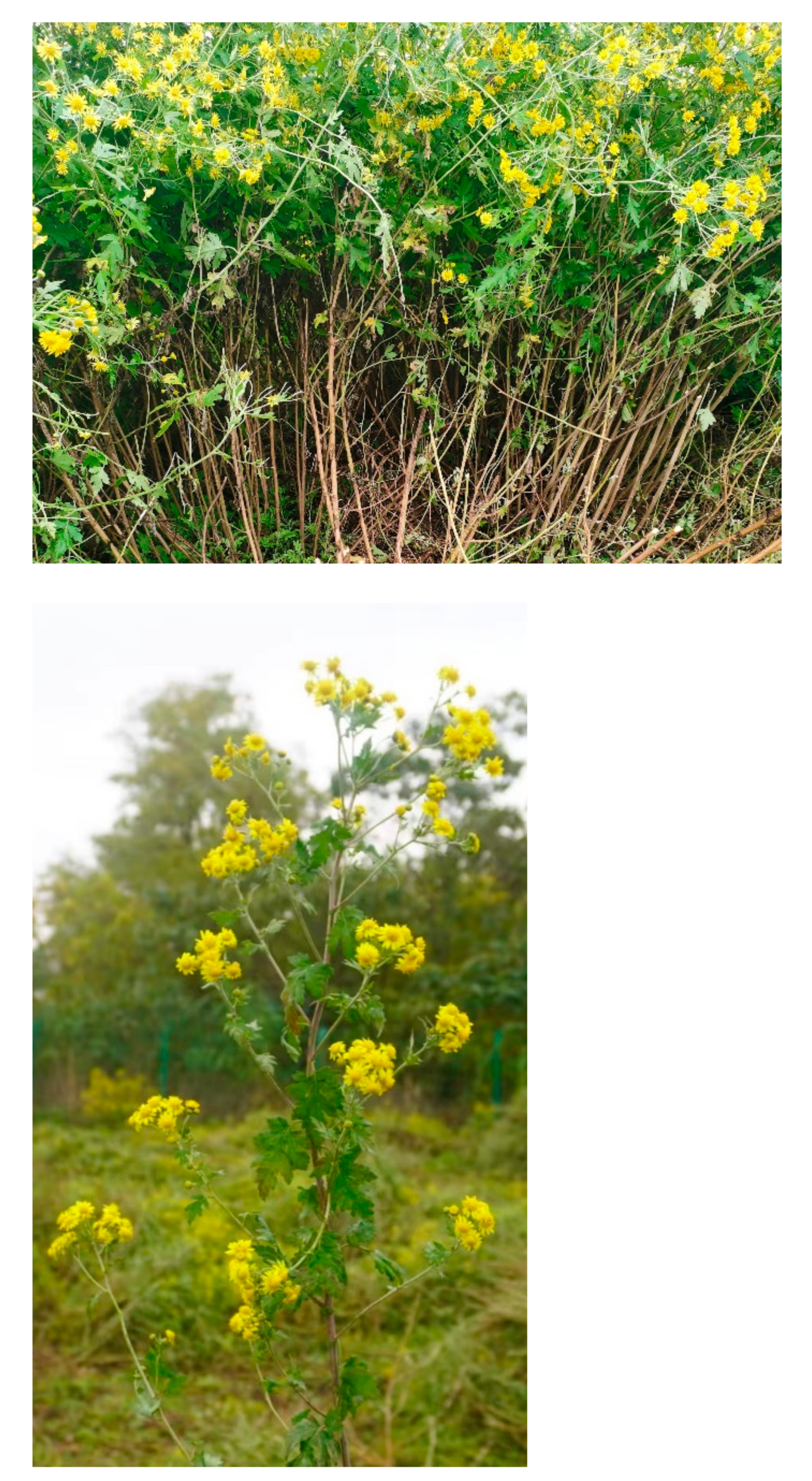
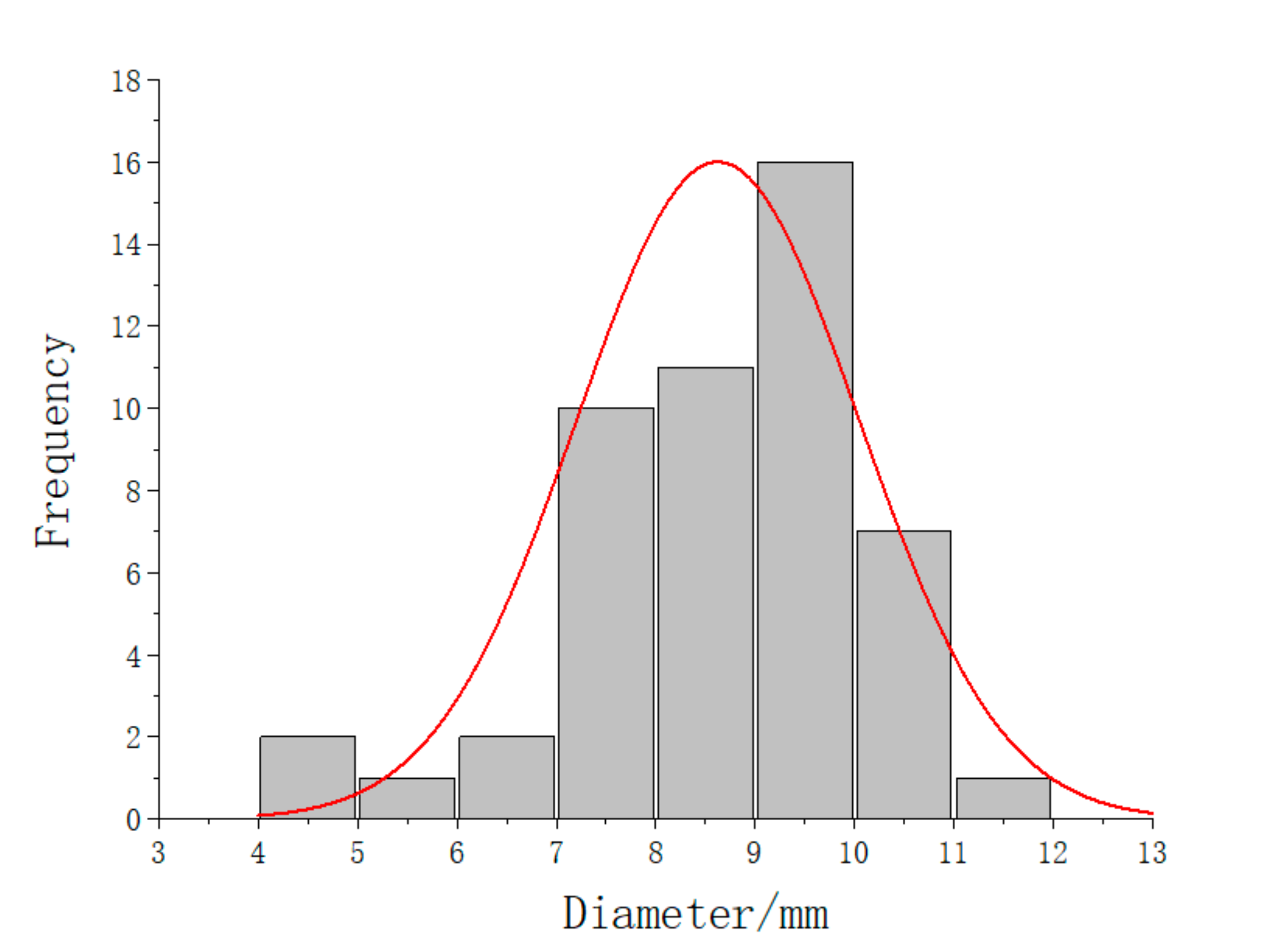
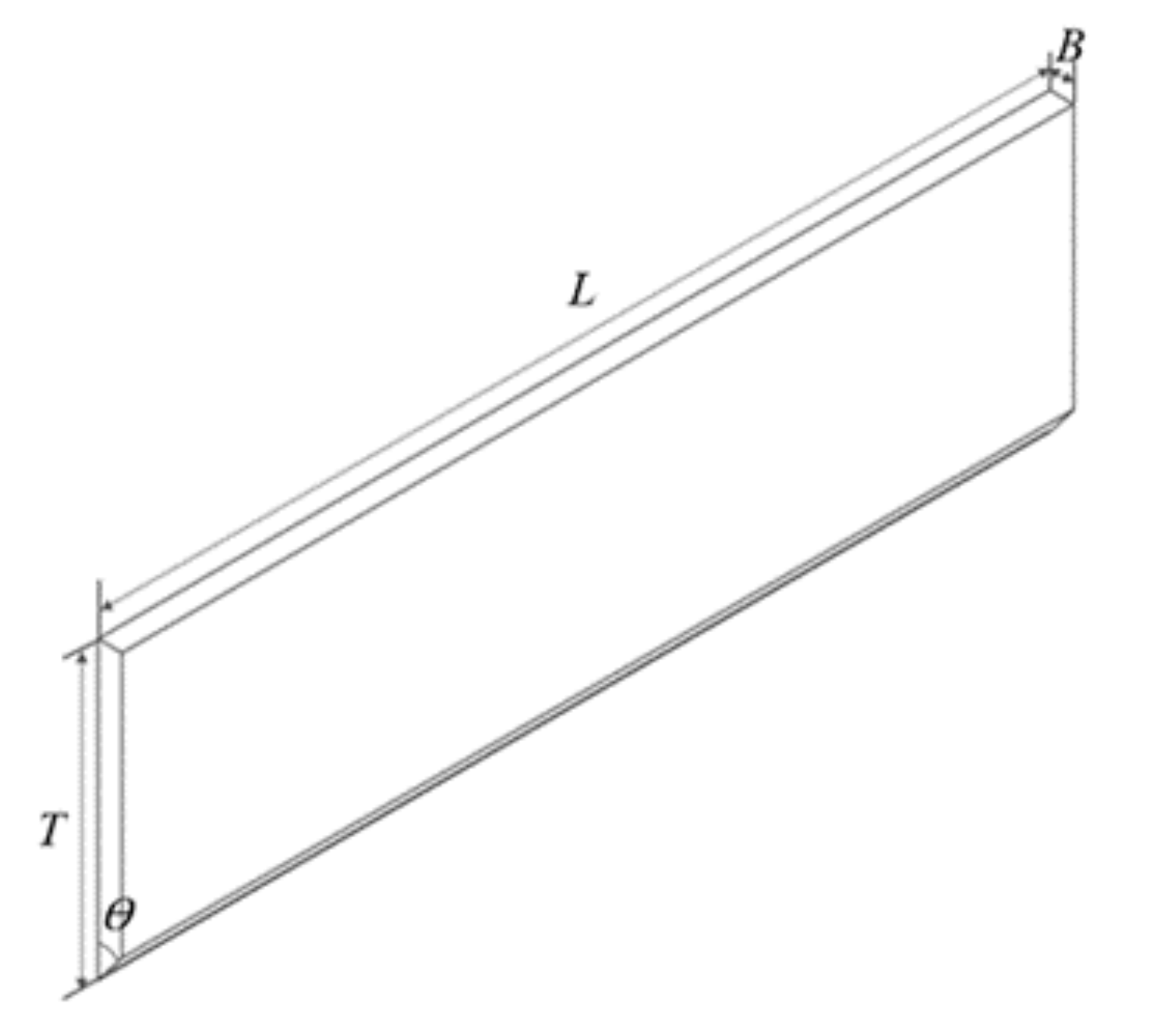

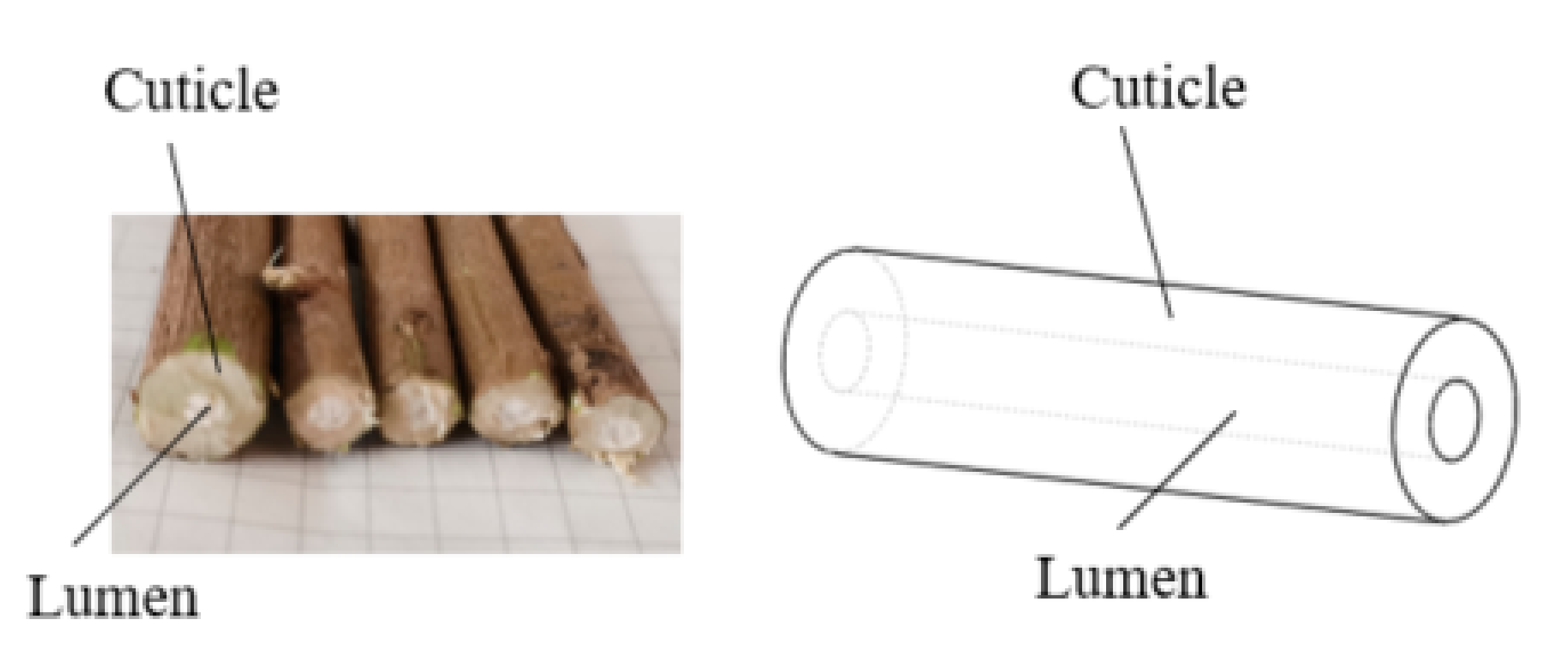
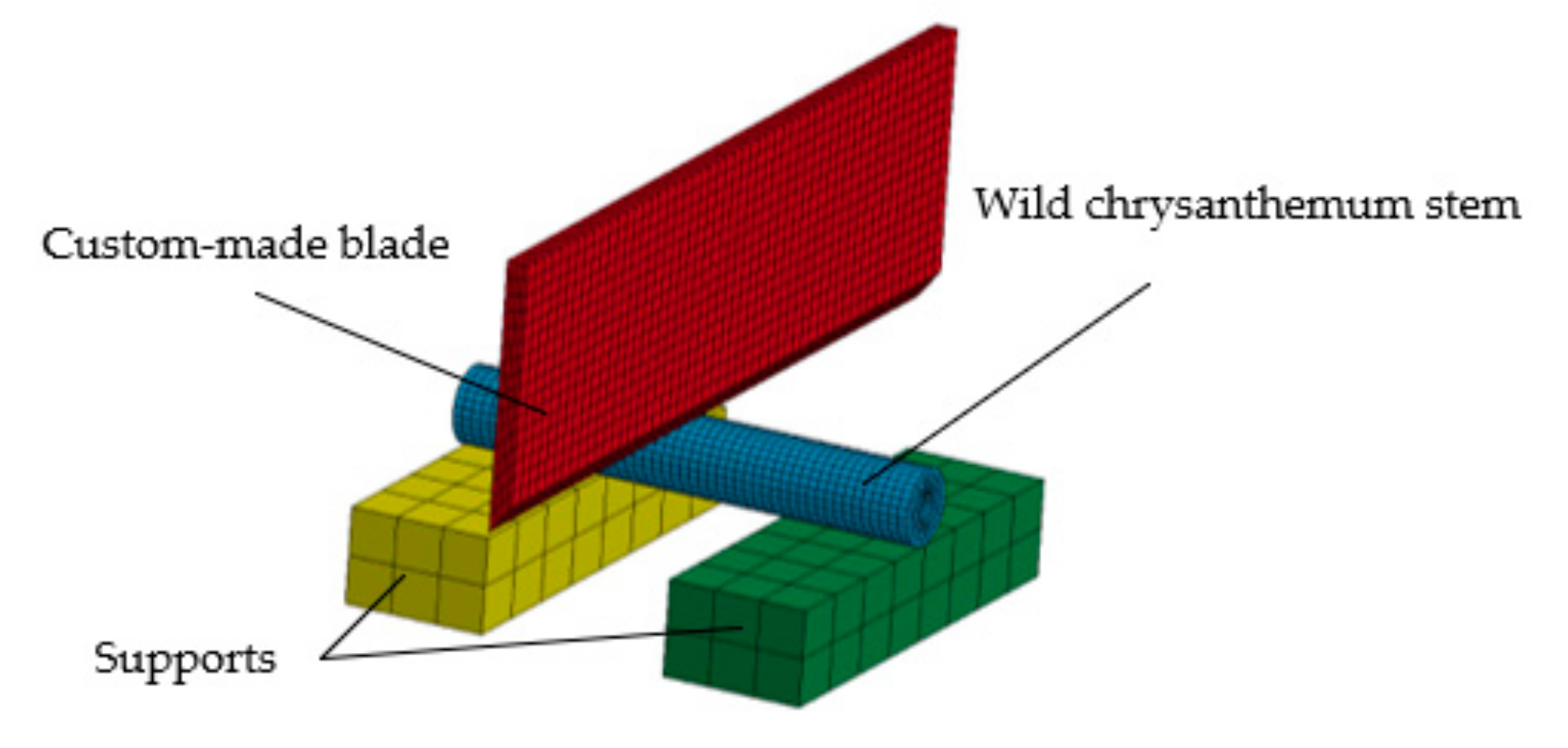
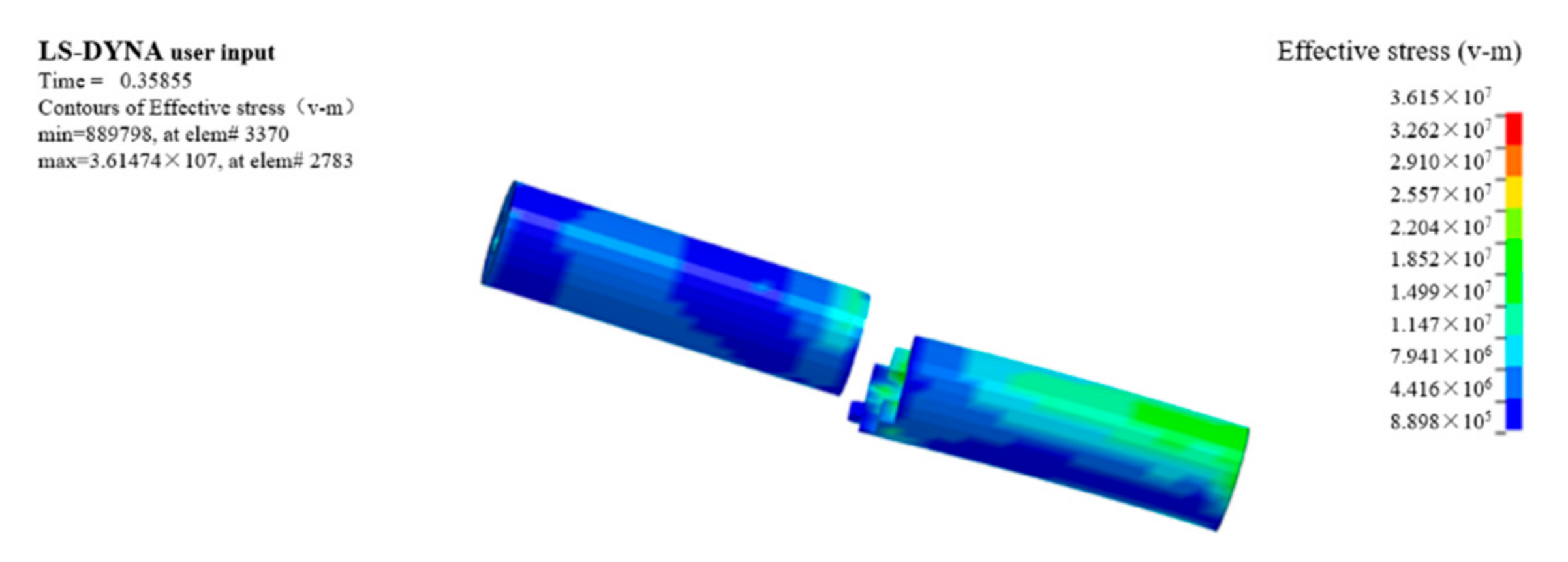
| Physical Characteristics | Units | Size |
|---|---|---|
| L | mm | 90 |
| T | mm | 28 |
| B | mm | 2.3 |
| ϴ | ° | 37.5 |
| Parameters | Units | Numerical Value |
|---|---|---|
| Density | kg/m3 | 7800 |
| Elasticity modulus | GPa | 207 |
| Poisson’s ratio | 1 | 0.3 |
| Part | Materials | Parameters |
|---|---|---|
| Blade and base | MAT_RIGID | See Table 2 |
| Stem | MAT_Plastic_Kinematic | Screening by test |
| Contact Position | Contact Type | Friction Coefficient |
|---|---|---|
| Blade and stem | ERODING_SURFACE_TO_SURFACE | Static friction coefficient 0.15, dynamic friction coefficient 0.1 |
| Stem and base | AUTOMATIC_SURFACE_TO_SURFACE |
| Symbol | Parameters | Low Level | High Level |
|---|---|---|---|
| X1 | Density (kg/m3) | 1000 | 1200 |
| X2 | Elastic modulus (Mpa) | 800 | 1200 |
| X3 | Poisson’s ratio | 0.2 | 0.4 |
| X4 | Yield stress (Mpa) | 10 | 20 |
| X5 | Shear modulus (Mpa) | 0.4 | 0.6 |
| X6 | Hardening parameter | 0 | 0.1 |
| X7 | Strain rate (C) | 80 | 100 |
| X8 | Strain rate (P) | 4 | 12 |
| X9 | Failure strain | 0.01 | 0.05 |
| No. | X1 | X2 | X3 | X4 | X5 | X6 | X7 | X8 | X9 | Maximum Shear Force/N |
|---|---|---|---|---|---|---|---|---|---|---|
| 1 | 1000 | 800 | 0.4 | 10 | 0.6 | 0.1 | 80 | 12 | 0.05 | 90.3 |
| 2 | 1200 | 1200 | 0.4 | 10 | 0.4 | 0 | 100 | 4 | 0.05 | 100 |
| 3 | 1000 | 800 | 0.2 | 10 | 0.4 | 0 | 80 | 4 | 0.01 | 44.6 |
| 4 | 1000 | 1200 | 0.2 | 20 | 0.6 | 0 | 100 | 12 | 0.05 | 180.3 |
| 5 | 1200 | 800 | 0.4 | 20 | 0.4 | 0.1 | 100 | 12 | 0.01 | 123.9 |
| 6 | 1200 | 1200 | 0.2 | 10 | 0.4 | 0.1 | 80 | 12 | 0.05 | 81.6 |
| 7 | 1200 | 1200 | 0.2 | 20 | 0.6 | 0.1 | 80 | 4 | 0.01 | 101.4 |
| 8 | 1000 | 1200 | 0.4 | 20 | 0.4 | 0 | 80 | 12 | 0.01 | 105.8 |
| 9 | 1000 | 1200 | 0.4 | 10 | 0.6 | 0.1 | 100 | 4 | 0.01 | 43 |
| 10 | 1200 | 800 | 0.2 | 10 | 0.6 | 0 | 100 | 12 | 0.01 | 58.7 |
| 11 | 1200 | 800 | 0.4 | 20 | 0.6 | 0 | 80 | 4 | 0.05 | 182 |
| 12 | 1000 | 800 | 0.2 | 20 | 0.4 | 0.1 | 100 | 4 | 0.05 | 201.3 |
| Parameters | Effect | Contribution/% | Sum of Squares | F-Value | p-Value |
|---|---|---|---|---|---|
| X1 | −2.95 | 0.08 | 26.11 | 0.6131 | 0.5156 |
| X2 | −14.78 | 2.09 | 655.64 | 15.40 | 0.0592 |
| X3 | −3.82 | 0.14 | 43.70 | 1.03 | 0.4177 |
| X4 | 79.42 | 60.19 | 18,921.02 | 444.32 | 0.0022 ** |
| X5 | −0.25 | 0.001 | 0.1875 | 0.0044 | 0.9531 |
| X6 | −4.98 | 0.24 | 74.50 | 1.75 | 0.3169 |
| X7 | 16.92 | 2.73 | 858.52 | 20.16 | 0.0462 * |
| X8 | −5.28 | 0.27 | 83.74 | 1.97 | 0.2959 |
| X9 | 59.68 | 34 | 10,686.30 | 250.95 | 0.0040 ** |
| Factor Level | X4 | X9 | X7 |
|---|---|---|---|
| 1.682 | 20.00 | 0.05 | 100.00 |
| 1 | 17.98 | 0.04 | 95.95 |
| 0 | 15.00 | 0.03 | 90.00 |
| −1 | 12.02 | 0.02 | 84.05 |
| −1.682 | 10.00 | 0.01 | 80.00 |
| No. | X4 | X9 | X7 | Maximum Shear Force/N |
|---|---|---|---|---|
| 1 | 14.995 | 0.03 | 90 | 122 |
| 2 | 12.02 | 0.02 | 95.95 | 84 |
| 3 | 14.995 | 0.03 | 90 | 112 |
| 4 | 12.02 | 0.04 | 95.95 | 107 |
| 5 | 17.98 | 0.02 | 84.05 | 151 |
| 6 | 14.995 | 0.0468179 | 90 | 140 |
| 7 | 9.99167 | 0.03 | 90 | 76 |
| 8 | 19.9983 | 0.03 | 90 | 175 |
| 9 | 17.98 | 0.04 | 84.05 | 162 |
| 10 | 12.02 | 0.02 | 84.05 | 64 |
| 11 | 14.995 | 0.03 | 90 | 123 |
| 12 | 14.995 | 0.03 | 90 | 124 |
| 13 | 12.02 | 0.04 | 84.05 | 102 |
| 14 | 14.995 | 0.03 | 90 | 121 |
| 15 | 14.995 | 0.03 | 79.9933 | 120 |
| 16 | 14.995 | 0.03 | 100.007 | 140 |
| 17 | 17.98 | 0.02 | 95.95 | 150 |
| 18 | 17.98 | 0.04 | 95.95 | 162 |
| 19 | 14.995 | 0.03 | 90 | 120 |
| 20 | 14.995 | 0.0131821 | 90 | 99 |
| Source | Sum of Squares | df | Mean Square | F-Value | p-Value |
|---|---|---|---|---|---|
| Model | 16,225.35 | 9 | 1802.82 | 75.48 | <0.0001 ** |
| X4 | 13,823.69 | 1 | 13,823.69 | 578.77 | <0.0001 ** |
| X9 | 1713.04 | 1 | 1713.04 | 71.72 | <0.0001 ** |
| X7 | 243.24 | 1 | 243.24 | 10.18 | 0.0096 ** |
| X4X9 | 180.50 | 1 | 180.50 | 7.56 | 0.0205 * |
| X4X7 | 84.50 | 1 | 84.50 | 3.54 | 0.0894 |
| X9X7 | 24.50 | 1 | 24.50 | 1.03 | 0.3350 |
| X42 | 24.07 | 1 | 24.07 | 1.01 | 0.3392 |
| X92 | 9.91 | 1 | 9.91 | 0.4148 | 0.5340 |
| X72 | 119.79 | 1 | 119.79 | 5.02 | 0.0490 * |
| Residual | 238.85 | 10 | 23.88 | ||
| Lack of fit | 145.51 | 5 | 29.10 | 1.56 | 0.3189 |
| Pure error | 93.33 | 5 | 18.67 | ||
| Core total | 16,464.20 | 19 |
| Parameter | Numerical Calibration |
|---|---|
| Yield stress | 17.96 |
| Failure strain | 0.0387 |
| Strain rate parameter C | 87.27 |
| Parameters | Value |
|---|---|
| X1 | 1100 |
| X2 | 1000 |
| X3 | 0.3 |
| X4 | 17.96 |
| X5 | 0.5 |
| X6 | 0.05 |
| X7 | 87.27 |
| X8 | 8 |
| X9 | 0.0387 |
| Stem Diameter/mm | Maximum Shear Force Measured/N | Maximum Shear Force Simulation Value/N | Error/% |
|---|---|---|---|
| 7 | 120 | 129.4 | −7.8 |
| 8 | 159.2 | 169 | −6 |
| 9 | 213.8 | 201.4 | 5.8 |
| 10 | 300 | 281 | 6.3 |
| 11 | 378.2 | 350 | −7.5 |
Publisher’s Note: MDPI stays neutral with regard to jurisdictional claims in published maps and institutional affiliations. |
© 2022 by the authors. Licensee MDPI, Basel, Switzerland. This article is an open access article distributed under the terms and conditions of the Creative Commons Attribution (CC BY) license (https://creativecommons.org/licenses/by/4.0/).
Share and Cite
Wang, T.; Liu, Z.; Yan, X.; Mi, G.; Liu, S.; Chen, K.; Zhang, S.; Wang, X.; Zhang, S.; Wu, X. Finite Element Model Construction and Cutting Parameter Calibration of Wild Chrysanthemum Stem. Agriculture 2022, 12, 894. https://doi.org/10.3390/agriculture12060894
Wang T, Liu Z, Yan X, Mi G, Liu S, Chen K, Zhang S, Wang X, Zhang S, Wu X. Finite Element Model Construction and Cutting Parameter Calibration of Wild Chrysanthemum Stem. Agriculture. 2022; 12(6):894. https://doi.org/10.3390/agriculture12060894
Chicago/Turabian StyleWang, Tao, Zhengdao Liu, Xiaoli Yan, Guopeng Mi, Suyuan Liu, Kezhou Chen, Shilin Zhang, Xun Wang, Shuo Zhang, and Xiaopeng Wu. 2022. "Finite Element Model Construction and Cutting Parameter Calibration of Wild Chrysanthemum Stem" Agriculture 12, no. 6: 894. https://doi.org/10.3390/agriculture12060894
APA StyleWang, T., Liu, Z., Yan, X., Mi, G., Liu, S., Chen, K., Zhang, S., Wang, X., Zhang, S., & Wu, X. (2022). Finite Element Model Construction and Cutting Parameter Calibration of Wild Chrysanthemum Stem. Agriculture, 12(6), 894. https://doi.org/10.3390/agriculture12060894





